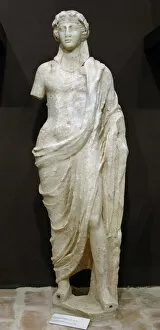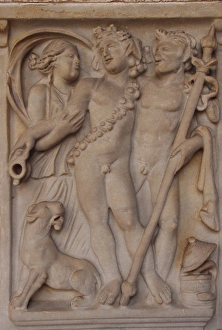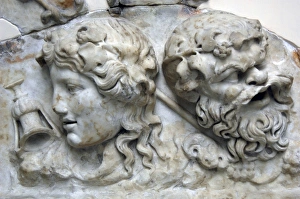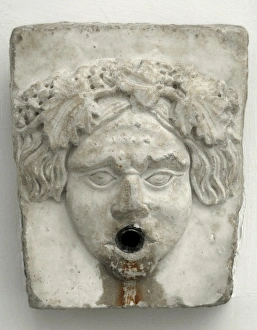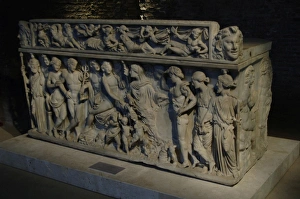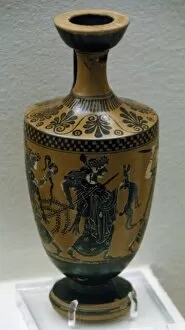Dyonisis Collection
"Dionysus: The Divine Patron of Wine and Revelry" Step into the world of Dionysus, the ancient Greek god of wine and ecstasy
All Professionally Made to Order for Quick Shipping
"Dionysus: The Divine Patron of Wine and Revelry" Step into the world of Dionysus, the ancient Greek god of wine and ecstasy. Marvel at the exquisite Statue of Dionysus, a testament to his divine presence. Adorned with grapevines and holding a goblet, this statue embodies the essence of celebration. Witness the fierce battle between Dionysus and the Indians in a mesmerizing mosaic at Palazzo Massimo. The intricate details capture their struggle for power, showcasing Dionysus' strength as he defends his domain. In another Roman mosaic, we find ourselves captivated by Dionysius' head - an enigmatic portrayal that reveals both his wild nature and serene countenance. This piece invites us to contemplate the duality within this deity. Venture into Vatican Museums where you'll encounter a breathtaking sculpture depicting Dionysus himself. With grapes cascading from his hands, he symbolizes abundance and pleasure - an embodiment of hedonism personified. Carved in marble with meticulous craftsmanship is a decorative relief featuring Dionysius alongside Silenus. Their intertwined figures exude joyous revelry while reminding us of life's fleeting pleasures. A marble fountain pipe adorned with a captivating mask transports us further into the realm of Bacchic festivities. Its intricate design evokes mystery and intrigue associated with these ancient rituals. Roman reliefs from 2nd century AD showcase masks representing both Dionysos and Silenos - two iconic figures synonymous with revelry. These masks serve as reminders that even gods partake in mirthful celebrations. The Sarcophagus of Aurelia Kyrilla takes us on a journey through Roman artistry as it depicts scenes inspired by Bacchic mythology. Here we witness how death intertwines with eternal bliss under Dionysian influence. Traveling to Spain, we discover an awe-inspiring mosaic dedicated to Bacchus himself - celebrating his divine presence and the joy he brings to mortals.

